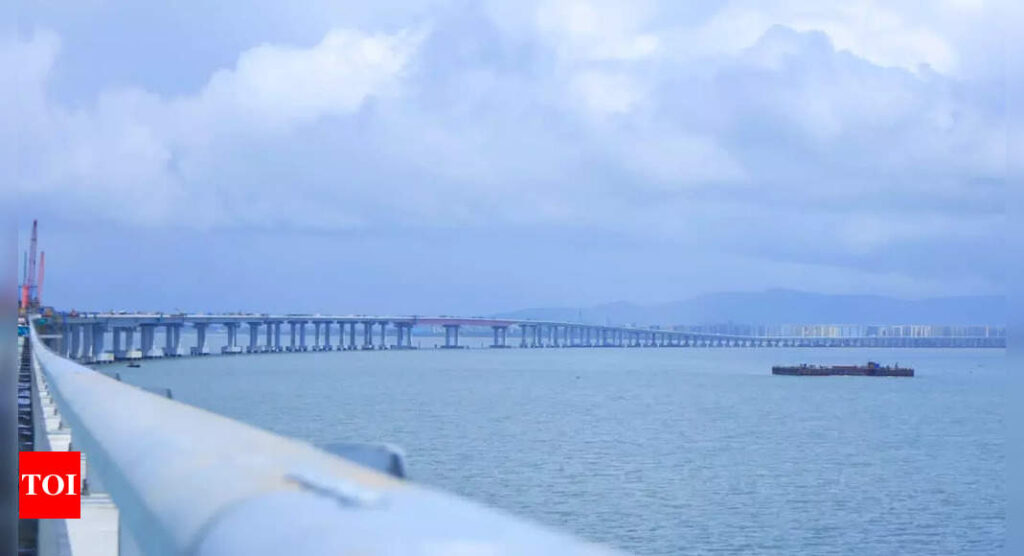[ad_1]
The MTHL spans 21.8 kilometers in length with over 16 kilometers long stretch over the sea. It connects Mumbai to Navi Mumbai and commuters will be able to traverse between the two places in just 20 minutes with signal free connectivity. The MTHL will eventually provide faster connectivity to the Mumbai-Goa highway, Mumbai-Pune expressway, Navi Mumbai International Airport and the JNPT port.
As part of the inspection, Dr Mukherjee held a meeting with the stakeholders and reviewed the progress of the project. Dr Mukherjee expressed satisfaction at the progress of this ambitious project and said that the Mumbai Trans Harbour Link is a significant milestone in the development of the region. MMRDA aims to complete the project within the stipulated time and hopes that it will be successfully integrated into the transportation network of Mumbai and Navi Mumbai.

Dr Sanjay Mukherjee inspecting the MTHL project
Some of the unique features of the MTHL include automated toll collection system and intelligent transport system. The Mumbai Trans Harbour Link project is being implemented in three civil works packages while package 4 will focus on the Intelligent Transport System (ITS), Automated Toll collection system, and electrical works. The bridge has Orthotropic steel deck (OSD) spans ranging from 65 meters to 180 meters in length – something that MMRDA says is a first for India.
Mumbai Trans Harbour Link: India’s Longest Sea Bridge Features, Benefits | MTHL Latest News, Update
Yet another important aspect of MTHL, as highlighted by Dr Mukherjee, is that the lighting poles installed on the bridge have been designed to withstand weather related challenges in the deep sea. A total of 1,212 lighting poles will be installed of which 20% have already been put in place. The poles are equipped with a Central Control & Monitoring System (CCMS) and will be suitable to survive the saline environment. They have a corrosion-free polyurethane coating, galvanization to prevent rust and prolong lifespan, and structural design to withstand high wind velocities. Also, the lighting poles will have a Lightning Protection System to prevent potential damage caused by lightning.
Earlier this year, Dr Mukjherjee in an exclusive interview with TOI had said that the MTHL and its associated connecting projects will increase the state GDP by at least 5%. “They are estimated to increase the national GDP by 1%. So, that itself tells us what is the potential that this one bridge has. And this bridge is therefore called a game changer,” he had said.

Dr Sanjay Mukherjee inspecting the MTHL project
“Navi Mumbai was developed way back as the satellite city of Mumbai and it was connected by two bridges. One is the Thane Creek bridge and the other one is the Airoli bridge. This (MTHL) actually makes Mumbai the closest to Navi Mumbai and it connects the area called as Shivri in Mumbai to an area called as Uluwe, Chirude in Navi Mumbai,” Mukherjee had explained.
According to Mukherjee, the Mumbai Trans Harbour Link project has been built with the most modern technology. It’s been built for a lifespan of 100 years, using Japanese state-of-the-art technology. The almost Rs 18,000 crore project has been majorly funded by the Japan International Cooperation Agency (JICA).
[ad_2]
Source link










More Stories
India’S Growth Forecast: S&P ups India’s FY’24 growth forecast to 6.4% on robust domestic momentum
India to remain fastest-growing major economy, but demand uneven: Poll
Jack Ma: Jack Ma gets back into business with ‘Ma’s Kitchen Food’